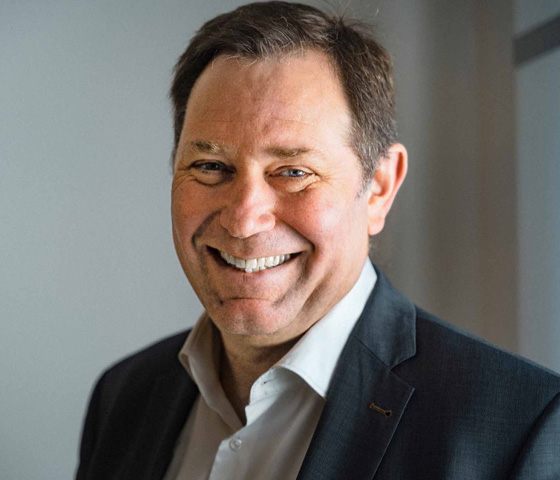
"Everything we do is driven by our desire to support agriculture."
Executive board member Jan-Hendrik Mohr explains in an interview what the Group represents – and how the company headquarters in Harsewinkel works closely with CLAAS locations around the world.
Mr Mohr, you have worked at CLAAS for almost 40 years. How has the company changed during this time?
We have grown enormously for one thing – increasing our turnover from several 100 million euros to around 4.8 billion euros a year. At the same time, our product portfolio has changed considerably, especially since acquiring the tractor business in the early 2000s. We have also become far more international than before: since the end of the Soviet Union, for example, we have been expanding our activities in Eastern Europe. We have also scaled up our operations in North America. And in recent decades we have been developing activities in Asia and many other countries around the world.

Jan-Hendrik Mohr, 58
grew up on a farm in North Hessen. In 1984 he completed a dual degree in mechanical engineering at CLAAS (combining academic studies with vocational training). He then performed various roles within the company – in R&D and Production at home and abroad. He joined the executive board in 2007 and has been responsible for the Grain Harvesting Business Division since 2016.
What role does Harsewinkel play in this development?
Harsewinkel is where the CLAAS Group started out and is still our headquarters. At the factory here we produce combine harvester models such as the LEXION and TRION, as well as the JAGUAR forage harvester and the XERION large tractor. <br/>The Claas family also has its roots in this town. The executive board and our shareholders are based here too. That's why the Harsewinkel plant has always tended to set the tone. Many of the new processes, methods and products developed here – especially in the combine harvester segment – have gone on to be adopted throughout the Group. But it's important to remember that the Harsewinkel site doesn't operate alone; it is part of a large network of sister factories from China to the USA.
How does Harsewinkel work with its international sister factories?
We have always emphasised the importance of structuring our global production sites as equal partners. Admittedly, any changes made in Production, Purchasing or R&D, for example, often start in Harsewinkel. But we cooperate with the other production plants on an equal footing. We exchange components with one another, supply one another, work together to find the best suppliers and develop on a cross-locational level, to name just a few examples.
What do your particularly like about the Harsewinkel site?
In my eyes, Harsewinkel embodies an attitude which characterises the entire Group – while we are proud or every success, we remember to ask: what next? Let me tell you a little story about Reinhold Claas. Before his death in June 2022, I accompanied him on a tour of Production. He found this very interesting and had lots of questions. Towards the end of the visit, he wanted to know what would happen next, even with regard to digitalisation. He was over 90 years old at the time.
Will CLAAS as a group become even more global in the coming years?
Without a doubt. In the Combine Harvester Business Division, for example, we may well increase our presence in the southern hemisphere – South America, Africa, Australia and New Zealand. But these possible expansions will not alter the CLAAS corporate philosophy one jot. Everything we do is driven by our desire to support agriculture.







